MYR is a particularly special German success story In just under ten years, the biotech company from Bad Homburg has gone from zero to 1 billion euros with just one drug. How is that possible?
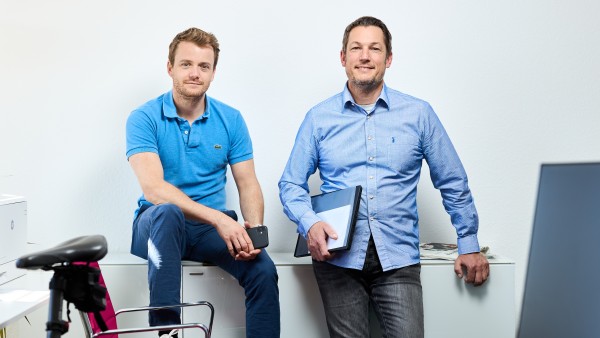
f.l. Florian Vogel (CCO) and Norbert Dinauer (COO) from MYR Pharmaceuticals in Bad Homburg, Germany.
31 July 2020. Corks are popping at the headquarters of the biotech company MYR GmbH on Thomasstraße in Bad Homburg. The European Medicines Agency has granted conditional approval to the drug Hepcludex. With it, the world’s first active ingredient for the treatment of chronic hepatitis D is approved before the end of the third phase of the clinical trials. “This was a very emotional moment for us,” says Florian Vogel now. Mr Vogel is Managing Director of MYR. “We succeeded in driving a life-saving drug to market – and providing patients with a treatment option for the most severe form of viral hepatitis.”
The approval was the reward for ten years of hard work. In December 2010, Jörn Möller and Alexander Alexandrov founded MYR Pharmaceuticals in partnership with the licensor Heidelberg University Hospital, where the active substance bulevirtide, which forms the basis of the drug, was developed by the molecular biologist Prof. Dr Stephan Urban. The virologist, who also coordinates the BMBF consortium of the German Federal Ministry of Education and Research, noted, “This project is a prime example of translational research from the university, which has found its way into the hospital in cooperation with industry.”
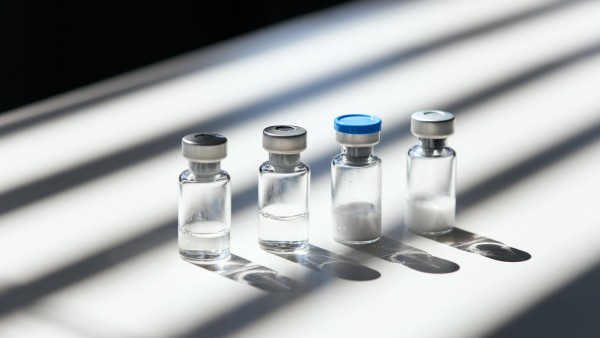
The European Medicines Agency (EMA) has granted approval to MYR's drug Hepcludex, the world's first active substance for the treatment of chronic hepatitis D, in summer 2020.
Up to the time of the approval, there was no drug treatment option for chronic hepatitis D virus infection, which damages the liver and in many cases is fatal. In industrialised countries such as Germany, viral hepatitis diseases are no longer a major problem, thanks to comprehensive vaccinations – but with 360,000,000 chronically infected people worldwide and 650,000 deaths per year, hepatitis B is one of the most widespread diseases. 5 to 10 per cent of chronic HBV-infected patients also suffer from hepatitis D, which is the most severe form of the viral liver inflammation and is untreatable in 80 per cent of cases. The marker bulevirtide is intended to prevent hepatitis D viruses from penetrating the liver cells. Norbert Dinauer, pharmacist and COO of MYR explained, “The active substance is a synthetic copy of a specific piece of the virus surface. The copy blocks the entry of the real virus into the liver cells and thus prevents long-term damage to the organ.”
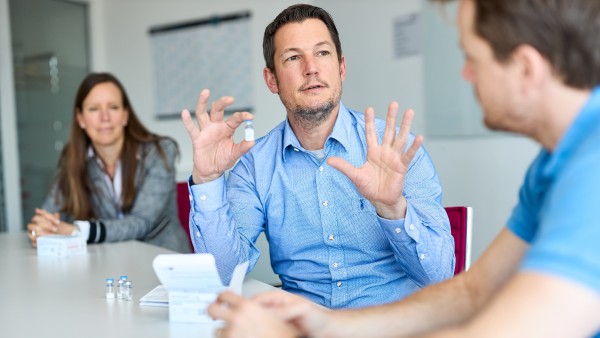
f.l. Christiane Schwittay (Senior Marketing Project Manager), Norbert Dinauer (COO) and Florian Vogel (CCO)
The approval of the virus blocker also caused a great stir internationally. In December 2020, the US pharmaceutical company Gilead offered up 1.15 billion euros for the 45-employee company from Bad Homburg. MYR is now part of the small circle of German unicorns – the exclusive circle of start-ups that have made it over the billion mark includes N26, Flixbus, About You and Mambu. The application for approval of bulevirtide in the USA is planned for this autumn. The decision of the US Food and Drug Administration (FDA) is then expected in mid-2022. If it is positive, the shareholders will receive an additional 300 million euros.
“One of the core decisions was to develop the active substance into market maturity on our own initiative,” says Florian Vogel about the most important course on the road to becoming a billion-euro company. “This enabled strategic planning of the steps while maintaining the highest efficiency.” MYR consistently promoted the active substance from the pre-clinical phase to a successful marketing campaign – from “bench to bedside”. According to Vogel, Germany as a location was a great advantage: “In addition to the good infrastructure, it is also access to talented people with expertise, passion and will, which allow an organisation to grow successfully. MYR has shown what can be achieved with strong partners.”
The High-Tech Start-up Fund (HTGF) already invested in the company in its difficult initial phase. The funds made it possible to further develop the active substance and test it for the first time in healthy volunteers as part of clinical phase I. “For MYR, the commitment of the HTGF, including its strategic consultancy and broad network, was crucial, especially in the very high-risk initial phase. Other German venture capital investors were not interested in investing in MYR at the time,” says Thomas Christély, member of the Management Board and Chief Financial Officer of MYR.
HTGF partner Bernd Goergen, who has a doctorate in the field of hepatitis, already recognized the potential of MYR in the pre-clinical phase. The early and close supervision has now paid off for the fund. Return flows in the three-digit million range were able to be achieved. “We are very proud to be able to realise the first HTGF unicorn with the sale of MYR,” said Alex von Frankenberg, member of the Management Board, following the billion-euro sale.
Published on KfW Stories on 19 May 2021.

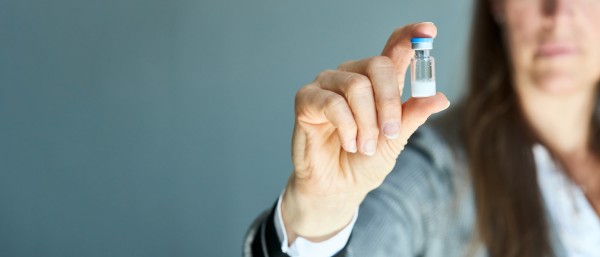
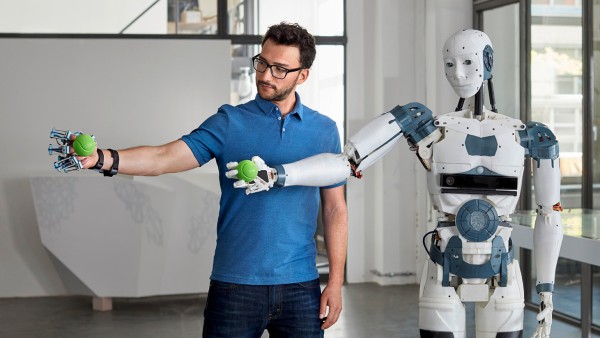
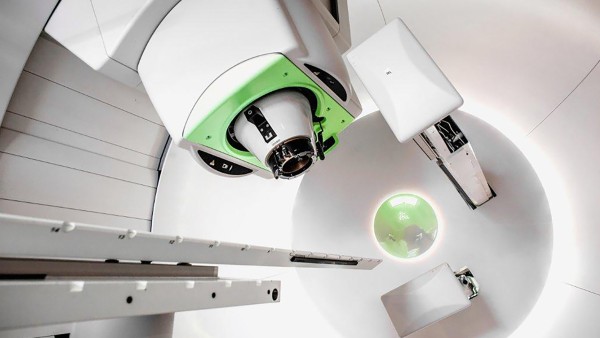
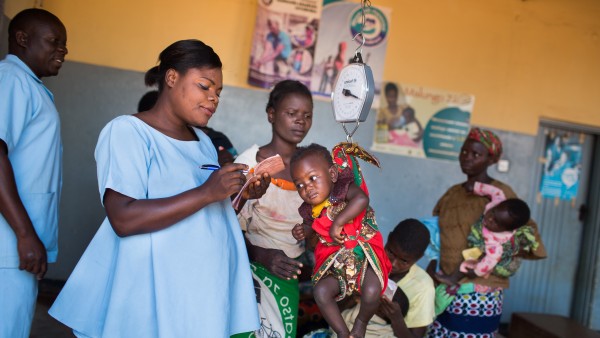
Data protection principles
If you click on one of the following icons, your data will be sent to the corresponding social network.
Privacy information